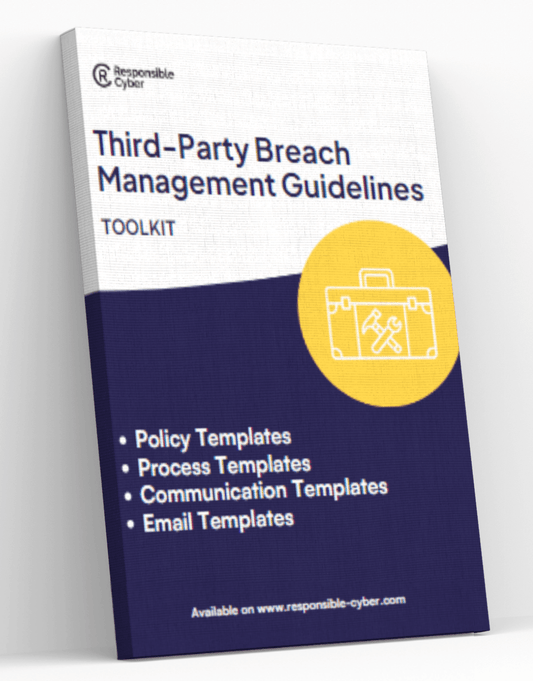Transforming Third-Party Risk: CSA's Cyber Trust Mark & Supply Chain Security

In the rapidly evolving digital landscape, managing cybersecurity risks extends beyond organisational boundaries. Supply chains, interconnected through various third-party relationships, have emerged as significant cyber risk fronts.
Singapore's Cyber Security Agency (CSA) addresses this need with the Cyber Trust Mark (CTM), a certification scheme designed to enhance the country's cybersecurity posture. This article explores how the CTM is revolutionising third-party and supply chain risk management.
The CTM, tailor-made for the Singaporean context, signifies a high standard of cybersecurity practices. It aims to elevate the level of cybersecurity among local organisations, thereby enhancing Singapore's overall cyber resilience.
Supply Chain Security and Third-Party Risk Management
Today's business landscape is a complex matrix of interdependencies, with organisations often entrusting crucial functions to an extensive network of third-party vendors. This intricate supply chain web, while conducive to operational efficiency and cost-effectiveness, inadvertently paves the way for potential cyber threats. Cybersecurity risks can cascade down the supply chain, with a single vulnerability in a single vendor posing serious implications for all associated entities.
To manage such risks, third-party risk management (TPRM) comes into play. This crucial process involves meticulously identifying, analysing, and controlling risks linked with the outsourcing of core functions to third-party service providers or vendors. Essentially, it is an organisation's strategic response to the cybersecurity challenges arising from their reliance on external parties.
In the cybersecurity context, third-party risk management takes a comprehensive approach to assessing a vendor's cybersecurity health. It involves a systematic examination of the third-party's security protocols, data management practices, access controls, and incident response capabilities. It also requires the implementation of measures to address identified vulnerabilities, ensuring that risks are mitigated before they can manifest into actual cyber incidents.
The Cyber Trust Mark and Supply Chain Security
The CTM goes beyond assessing an organisation's internal cybersecurity posture. One of its five core domains is Supply Chain Security, addressing the need for robust third-party risk management.
Organisations seeking the CTM certification must demonstrate effective measures to manage cybersecurity risks in their supply chain. This includes evaluating third-party vendors' cyber health, ensuring contractual cyber risk obligations, and maintaining a response plan for potential third-party cyber incidents.
Transforming Third-Party Risk Management
The CTM's focus on supply chain security pushes organisations to elevate their third-party risk management strategies. By achieving this certification, organisations can inspire trust in their customers, partners, and stakeholders, assuring them of the secure handling of their data across the entire supply chain.
Additionally, third-party vendors might be encouraged to seek their CTM certification, creating a ripple effect of enhanced cybersecurity throughout the supply chain. This can dramatically lower the overall cyber risk within an entire industry sector, benefitting all participants.
IMMUNE X-TPRM; A Solution for Third-Party Risk Management
Among the solutions assisting businesses in managing third-party risks is IMMUNE X-TPRM by our company Responsible Cyber, a Singapore-based company. The platform provides a comprehensive and user-friendly interface for third-party risk management, allowing organisations to streamline their vendor risk processes.
IMMUNE X-TPRM not only evaluates the cyber risk potential of third parties but also offers additional features that surpass typical TPRM tools. These include monitoring various data points for each third party and translating these automatically into data insights equipped with risk scenarios. It allows for customisation, catering to the specific needs of each organisation, thereby creating a personalised approach to third-party risk management.
Furthermore, IMMUNE X-TPRM's focus on the Asian market makes it a unique choice for businesses operating within this region. It accounts for specific regional challenges and regulations, offering an adaptable solution that fits the local context.
Through platforms like IMMUNE X-TPRM, businesses can more effectively navigate their complex web of third-party relationships. It provides organisations with a robust line of defence, transforming the way they approach, manage, and mitigate their third-party cyber risks. This shift to more advanced, holistic, and customised TPRM strategies not only mitigates cyber threats but also promotes a more secure and resilient supply chain.
The Cyber Trust Mark is more than a certification; it is a catalyst for transforming third-party risk management and supply chain security. It serves as a robust framework for organisations to enhance their cyber health, safeguard their supply chains, and promote a safer business environment.
As cyber threats continue to evolve, such certification schemes become increasingly critical in maintaining cyber resilience, making CSA's CTM an essential milestone in the cybersecurity journey.







